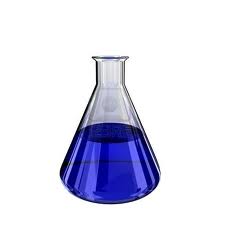Chrono, I think most people here are taking MB orally in a glass of water. You're the first that I've heard talk about lingual/sublingual dosing. I'm not sure the top of the tongue has the same characteristics as the sublingual tissues; the only things that are given supraligually that I know of would be things that you want to dose the throat with, like cough drops.
No, I'm not sure about that either. The only paper I could find on supralingual drug delivery was
this one, which found it to be comparable to sublingual administration in that model. Certainly not conclusive, but it's an idea. I thought there were a few other people who were just dropping it in their mouths as well, but I could be mistaken.
At any rate, the points you raise about concentration effects, like getting 10X more in brain tissue than in blood are important. Critical, in fact, if we want to attribute the effects we see, or think we see, to enzymes with IC50s that are orders of magnitude higher than what we would get instantaneously from an i.v.
I wasn't implying that the effects I'm trying to explain are due to MAOA inhibition. Since I'm on tramadol, I wouldn't be taking MB at all if I thought there was even a possibility of that happening. What I was referring to here was the mitochondrial enhancement effect I mentioned
earlier, which shows activity at concentrations which are much closer to our dosage range. By looking at the pharmacokinetics, I was only trying to guess how close a 100mcg dose might bring us to the lowest data point of 10nM.
The problem with the concentration in brain idea is that you don't get 10X the instantaneous i.v. level, but rather the blood level drops as the MB partitions into the brain and all the other compartments that it encounters....That makes it really hard to figure out exactly what the concentration is going to be at the site of action, but implies that it isn't going to be particularly high in any one place, because there are so many places in the body where it's happy to hang out.
To be honest, being ill-read and half-educated, I'm not really comfortable applying the math you're talking about here

I was referring to the specific results in the reference I spoke of; the full paper was
uploaded by someone here...might even have been you, I don't recall the original post. The data I mentioned for both human blood concentration and the whole blood vs. brain concentration in rats were both derived at 1h+, not the instantaneous IV. And since fig. 3 has a logarithmic scale it's probably closer to 30x brain concentration for IV, and 10x for regular oral. While this is rat data, I feel like this kind of real-world result should trump a theoretical consideration of the solubility profile, though I certainly wouldn't be surprised if I'm wrong about this.
With regular oral dosing, brain concentration might be somewhere around .6nM or so, assuming a 10x differential at 1h. This is a lot of guesswork, but I don't have much data to work with right now, and it's just some ballpark figuring.
As I said, the effects I experienced in the first 10 days or so were well beyond what I've felt from any number of other nootropics which now inhabit a box in my closet (including an experiment using ultra-low-dose naltrexone for pain management, from a similar dropper bottle), and I was expecting absolutely nothing subjective at the beginning of my trial. People who felt comfortable getting closer to 1mg described even stronger effects, so I'm just trying to see what mechanisms we might use to explain this phenomenon aside from a mass placebo effect.

I'll probably stop using MB for a while, to see if the effects come back after a break.
Edited by chrono, 30 November 2011 - 03:34 PM.



















































